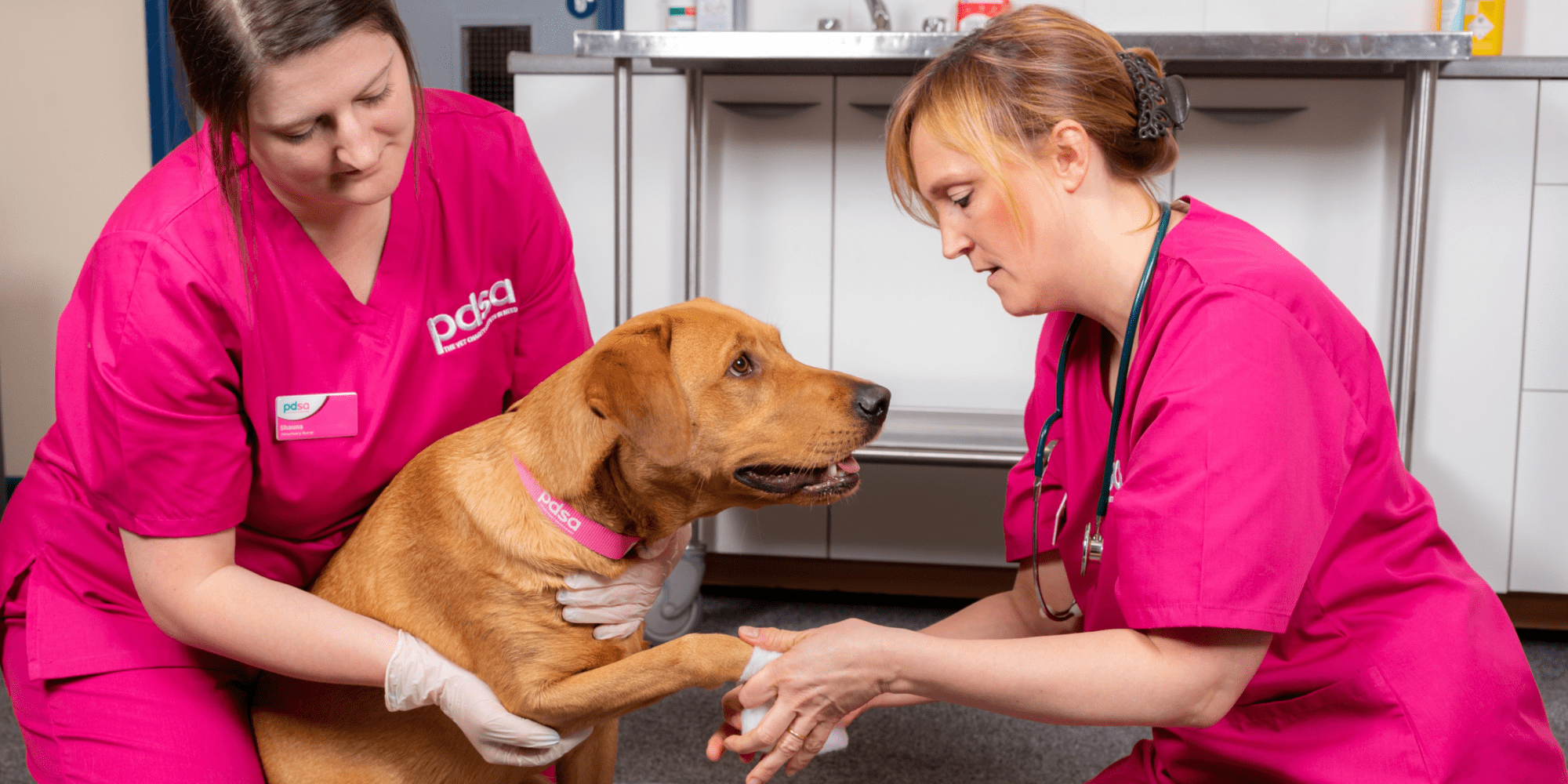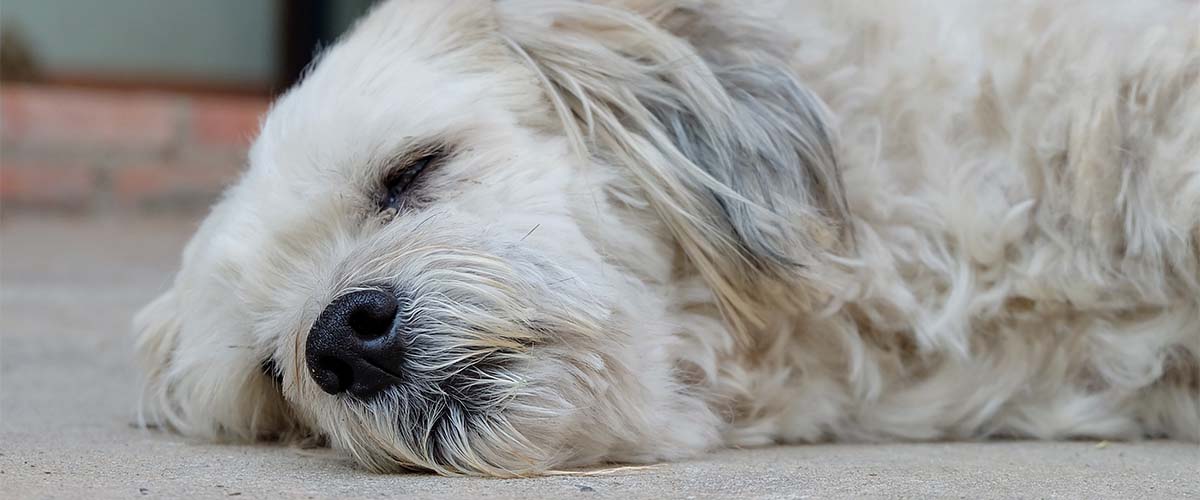Bandage care for pets
Overview
- Bandages are used to protect wounds and other injuries while they heal.
- They should always be applied by a vet or vet nurse and need regular changing.
- Keep an eye on your pet’s bandage at home to make sure it stays clean and dry.
- You may need a cone collar and/or a paw cover to protect the bandage.
- Contact your vet if your pet’s bandage gets wet, slips off, smells, or if there are signs of swelling, redness, or injury to the skin around it.

A bandage is a strip of material that is wrapped around an area of the body to protect a wound. The outer bandage provides support and protection for the other layers of material inside. Different materials might be used depending on the reason for the bandage.
Your pet might need a bandage if they have a wound, either caused by an injury or a surgery. However, not all wounds will need bandages.
There is also a special, very thick and supportive bandage called a “Robert Jones” bandage. This can be used to keep a leg from bending, for example to support a broken bone until it can be surgically fixed.
How to care for a bandage at home
Bandages are more complicated than they look and can cause injury if they’re put on the wrong way, so should only be applied by a vet or a vet nurse. They will then let you know how often you need to come back to the vets to have the bandage changed.
In an emergency, if your pet is bleeding then you can wrap a bandage lightly to help stem the blood flow until you reach your vets.
You should check your pet’s bandage at least once a day, looking for:
- Slipping or complete loss of the bandage.
- Signs of chewing/scratching at the bandage.
- Any wet areas.
- Any bad smell or leaking fluid.
- Rubbing of the edges of the bandage on your pet’s skin.
- Swelling of the skin around the bandage, especially if the bandage is around the legs or feet.
You may need to keep your pet rested to make sure their bandage stays in place.
If you take them outside you will need to protect their bandage from getting wet and dirty, for example with a protective boot or paw cover.
You might also need to use a cone collar or other protective collar to stop your pet from chewing their bandage.
- How long will my pet need their bandage?
- How can I stop my pet licking their bandage?
- What should I do if there is blood coming through my pet’s bandage?
How long will my pet need their bandage?
This will depend on the reason for the bandage, some injuries will need a bandage for weeks but some may last just a few days. Ask your vet or vet nurse for advice on how long your pet is likely to need a bandage, but this can also depend on how well the injury is healing so they may not be able to give you an exact time.
How can I stop my pet licking their bandage?
Pets might try and lick or chew their bandage but this can make the bandage wet and dirty so you should try and stop them from doing so. You might try distracting them with food, or you could try a cone collar or other protective collar.
What should I do if there is blood coming through my pet’s bandage?
If there is blood coming through your pet’s bandage you should call your vet for advice.
Published: April 2023
Did you find this page useful?
Tell us more
Please note, our vets and nurses are unable to respond to questions via this form. If you are concerned about your pet’s health, please contact your vet directly.
Thank you for your feedback
Want to hear more about PDSA and get pet care tips from our vet experts?
Sign up to our e-newsletter
Written by vets and vet nurses. This advice is for UK pets only. Illustrations by Samantha Elmhurst.

